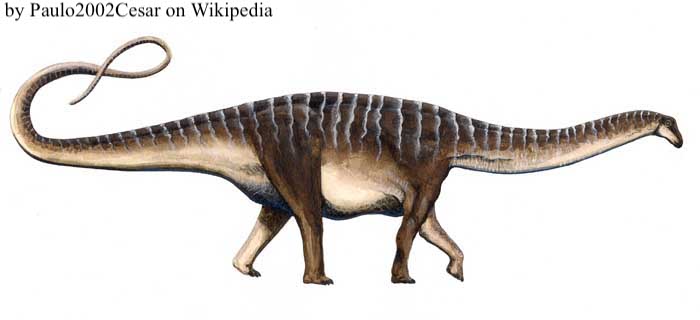Welcome to Amazonsaurus

Name Definition
Amazon’s lizard (named after the Brazilian Legal Amazon region)
Name Given By
Ismar de Souza Carvalho, Leonardo dos Santos Avilla, and Leonardo Salgado in 2003
Location
Itapecuru Formation of Maranhão, Brazil
Classification
Dinosauria, Saurischia, Sauropodomorpha, Sauropoda, Diplodocoidea, Rebbachisauridae
Size
2 - 3 meters tall (6.5 - 9.8 ft), 11 - 12 meters long (36 - 39 ft), approximately 5.5 tons (~5000 kg)
Temporal Range
Aptian - Albian stages of the Early Cretaceous, ~125 - 100 million years ago
Ecological niche
large herbivore
Species/Sub Species
A. maranhensis
Diet
As is with most diplodocoids due to their height disadvantage compared to other sauropods, Amazonsaurus probably consumed low-lying plants like most herbivores without the height
Introduction
Amazonsaurus is a genus of rebbachisaurid sauropods that lived in Brazil during the Early Cretaceous. Amazonsaurus was named after the Brazilian Legal Amazon region which contains all nine states in the Amazon basin, Maranhão being one of them. The specific name, maranhensis, was named after the state of Maranhão in Brazil where it was discovered.
Amazonsaurus would have followed the typical sauropod body plan, with four large limbs to support its body, though it would have had a long but horizontal neck as well as a whiplash-like tail which is exclusive to diplodocoids. Although it is a derived diplodocoid, with some reaching up to lengths of 30 meters, Amazonsaurus wouldn’t have exceeded more than 12 meters in length, making it a dwarf compared to the Late Jurassic diplodocoids.
Fossils of Amazonsaurus include dorsal and caudal vertebrae, ribs, and a portion of the pelvis including a fragmentary pubis and ilium. These fossils are the only identifiable remains from the Itapecuru Formation in Brazil. The geologic formation dates back to the Aptian - Albian stages of the Early Cretaceous epoch which is around 125 - 100 million years ago. Amazonsaurus was recovered from sediments in the formation, leading geologists to believe that the sediments were from a floodplain with a river delta.
The tall neural spines on the tail vertebrae make Amazonsaurus a diplodocoid sauropod, however, the fragmentary remains make Amazonsaurus hard to place within the Diplodocoidea superfamily. Some of these features suggest that it was a late-surviving member of a lineage of basal diplodocoids, possibly making it a member of the Rebbachisauridae with some members living to the Late Cretaceous alongside the gargantuan titanosaurs.